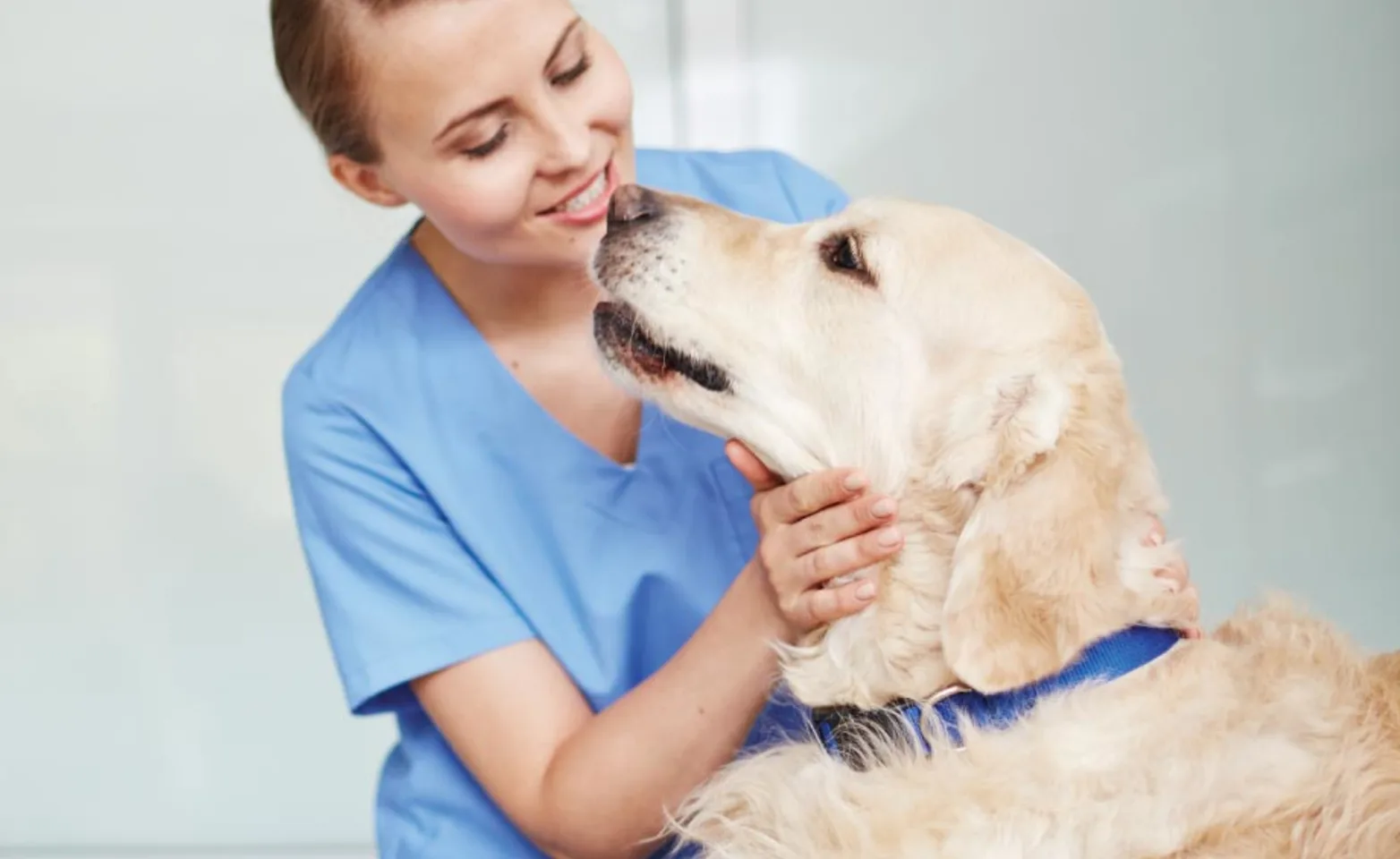Blue Cross Animal Hospital

It’s one of every pet owner’s worst nightmares, but it can happen to even the best-intentioned of us: Fluffy or Fido goes missing. Fences and leash clips are not fool proof, collars and tags come off. Or someone opens a door, and the temptations are just too great. Accidents happen. We get regularly get calls from pet owners letting us know their pet is lost and seeking advice. While we hope you never have to use it, here’s what we suggest if your beloved pet takes off.
1. Make a Descriptive and Eye-Catching Lost Pet Poster!
Find a photo that is a good likeness of your pet, and make up a poster that will alert the public about your missing pet. Make sure the photo is of good quality and ideally shows the whole pet (not just the head!) If your pet looks different from different angles, include a few pictures! If you can, print off the posters in colour, as details aren’t as obvious in black and white, and you want it to be eye-catching to the public. Make sure to include: your pet’s name, age, breed, approximate weight (for dogs), area your pet went missing, and date your pet went missing. If your pet was wearing a collar and tags, add this info. Draw people’s attention to any unique physical characteristics. You should also include a note about the pet’s temperament (timid, friendly, etc) as this will help the public in approaching your pet if they find him or her. List at least one reliable telephone number where you can be contacted! It’s a good idea to list to also list an alternate phone number and/or email address. Optional items to include: You may to advertise a reward if found. Some people feel that listing medical conditions or the fact that a pet requires daily medication will encourage someone to come forward who may have taken the pet in or worse, stolen him or her.
2. Distribute & Network!
Print off your posters and get to work distributing them in the area your pet has gone missing. Place them on poles on the streets, at parks, community bulletin boards, and high traffic areas. Target pet related businesses – pet supply stores, obedience schools, groomers, daycares. Make sure all local veterinary clinics and shelters have a copy – often found animals are brought by good samaritans to these establishments to be scanned for a microchip in the hopes of finding the owner.
3. Act Quickly!
Timing matters – don’t delay, waiting to see if he or she will turn up. As soon as you know your pet is missing, start searching. Gather some friends and family and divide and conquer. Search the area your pet was last seen. Arm searchers with treats your pet loves and items which smell like the pet’s home/you, as well as posters that can be put up and handed out. For dogs, especially search areas the pet is familiar with – the local dog park, places you’ve walked together, etc. For cats (especially indoor cats that are not used to the outside world) – make sure to look under cars, in garages, alleys and other hiding spaces. Don’t give up!
4. If your pet is chipped, contact your microchip company immediately!
Let them know your pet has gone missing and confirm the address the telephone number on your file is still correct – and update your contact info if it’s not. It’s surprising how many chipped pets are found but have out of date contact info, so the finders have no way to reach the owner. People move, numbers change, and sometimes updating this information is forgotten.
5. Use the internet!
Social media is huge, and fast-reaching. Post an electronic version of your Lost Pet Poster on Facebook, and update your Twitter. If you don’t use social media – reach out to someone in your friend circle who does. Once your Lost Pet Poster is out there in cyberspace – it can easily be “shared”, and you’ll reach more people than you know, in no time, who will be keeping their eyes peeled for your baby while you’re out searching.
Don’t just post on your own Facebook profile – most local pet businesses and rescues have Facebook pages as well – with hundreds of subscribers who are already seeing their notifications. Share on their pages. The more you share, the greater your online support network will be. If your pet is a rescue, definitely contact the organization who hooked you up with your pet to share on your behalf! If you got your pet from a breeder, contact them so that they engage their own contacts in the pet world!
The Toronto Humane Society (www.torontohumanesociety.com) has an online bulletin board where lost pet info can be posted – make sure to upload your pet’s photo and info there. They’ve also got a “Found Pets” bulletin board – be sure to look there to see if anyone has listed your pet as Found.
Toronto Animal Services: file a lost pet report with Toronto Animal Services by calling (416) 338-PAWS (7297). Check the lost and found pets in the City Animal Control system at http://www.toronto.ca/animal_services/lost_pets.htm. If your pet is missing outside of Toronto, contact the nearest city animal control office for help.
Craigslist and Kijiji. Create a lost pet listing for your pet, and diligently search through the found pet posts.
Helping Lost Pets (www.helpinglostpets.com) is a free online database of Lost Pets in North America – be sure to take advantage of their service. Posting your pet will automatically send out notifications to all local subscribers – which include many shelters and other animal businesses. They post your pet’s information on your behalf to their entire subscriber list of concerned pet people and businesses in the geographic area where your pet has gone missing. You want them working for you – it’s easy and only takes a few minutes! (You can actually pre-register your pet on this site even if he or she is safe at home – create a profile and then in case of the worst, all you have to do is login, change your pet’s status to lost, and add the last seen details.)
Follow Up! Check in OFTEN with Local Vet Clinics and Shelters
Call or walk in to vet clinics and shelters in the area that your pet went missing to inquire if any pets matching his or her description have arrived. Be sure they still have your Lost Pet Poster or listing on hand, and they know how to contact you should your pet show up. Local Toronto shelters have a waiting period that they hold found pets before they go into adoption. Be relentless! In the suburbs or outside of the city, not all shelters are open 24-7 to the public, but many do have staff on site feeding and exercising pets. If they don’t answer the phone, show up and knock on the door!
Investigate all leads
If someone contacts you having possibly found your pet, check it out even if it seems too far away to possibly be your pet. Animals have been found miles from where they were originally lost.
While we hope it never happens that your pet goes missing, following all these steps will greatly improve the chances your beloved pet will be reunited with you.
And…when your pet is found:
It’s always a good idea to have him or her checked out by your vet – especially if he or she has been missing for days. You never know what trouble they may have gotten on their great adventure. (For example, dehydration, wounds, exposure to toxins or disease are all concerns)
Circle back and do make sure you update your pet as “Found” on websites and social media, remove posters that you have posted, and let your local shelters and clinics know your pet’s been located.
Make sure to thank everyone that was a part of your search efforts, and /share your happy ending!
Things you can do now while your pet is safe at home to improve your odds should the worst happen:
Microchip your pet & make sure your contact info is up to date with the microchip provider. Whereas collars and tags can slip off, a microchip is implanted under your pet’s skin and remains there always. A chip is NOT a pet GPS and is only useful if you keep your contact information up to date!
Have tags made that include your pet’s name and a telephone number at which you can be reached. Make sure your pet is wearing his or her tags. Replace worn out and illegible tags, and update tags as your address and phone numbers change.
Licensing your pet with the city will ensure that if your pet lands in the hands of animal control, you’re contacted before your pet goes into the shelter system. Your pet should be wearing his or her City tags. Again, make sure you update your contact information as it changes.
Pre-register your pet with Helping Lost Pets
For dogs: if you’ve got a recall problem or a door bolter, get to work on training your dog to sit and wait before going through doorways, generally increasing his focus on you, and coming when called. If your dog won’t reliably come when called, consider obedience training that zones in on focus and reliable recall exercises before he’s allowed outdoor off-leash time in areas that are not securely fenced.
Especially never trust a newly adopted dog off-leash until you’ve established a bond and have done some training!
–Written by Andria G. Registered Veterinary Technician at Blue Cross Animal Hospital

